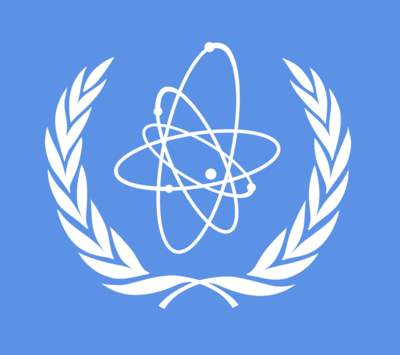The following are summaries of reports and updates released by the International Atomic Energy Agency on Iran’s nuclear program since January 2016, when the nuclear deal went into its implementation phase.
 Jan. 16, 2016: IAEA Director General Yukiya Amano confirmed that Iran had taken the necessary steps to start implementation of the nuclear deal, also known as the Joint Comprehensive Plan of Action (JCPOA). Inspectors on the ground verified that Tehran reduced its enriched uranium stockpile, cut and capped its capacity to enrich uranium, modified the Arak heavy water rector to block its ability to produce plutonium, and allowed more robust monitoring by the IAEA.
Jan. 16, 2016: IAEA Director General Yukiya Amano confirmed that Iran had taken the necessary steps to start implementation of the nuclear deal, also known as the Joint Comprehensive Plan of Action (JCPOA). Inspectors on the ground verified that Tehran reduced its enriched uranium stockpile, cut and capped its capacity to enrich uranium, modified the Arak heavy water rector to block its ability to produce plutonium, and allowed more robust monitoring by the IAEA.
Feb. 26, 2016: The IAEA’s first quarterly report on Iran’s nuclear program following implementation noted that Iran briefly exceeded the 130 metric ton limit on its heavy-water stockpile. Tehran, however, reduced the 130.9 tons back below the limit by shipping out 20 metric tons. The report was short but detailed Iran’s compliance with specific aspects of the deal.
May 27, 2016: The IAEA report to the Board of Governors found that Iran was living up to its commitments under the nuclear deal. The watchdog said that Iran accepted additional inspectors and provided complementary access to sites and facilities under the Additional Protocol.
Sept. 8, 2016: The IAEA report to the Board of Governors found that Iran was living up to its commitments under the nuclear deal. For example, Iran had not surpassed limits on its stock of enriched uranium or heavy water. As with earlier quarterly reports, however, this one did not include details about every restriction in JCPOA.
Nov. 17, 2016: The IAEA report found that while Iran was in general compliance with its obligations, the country’s stocks of heavy water had exceeded the limit by 0.1 metric tons. Iran, however, informed the IAEA of its plan to ship it out of the country.
Jan. 19, 2017: IAEA Director General Amano and U.S. Energy Secretary Ernest Moniz confirmed that Iran had removed certain infrastructure and excess centrifuges from the Fordow Fuel Enrichment Plant by the one-year anniversary of implementation, as required under the nuclear deal.
Feb. 24, 2017: The Director General’s report found that Iran was complying with the JCPOA. The report said that Tehran was not continuing construction of its heavy water research reactor at Arak. Iran’s stockpile of low-enriched uranium —which can be used for peaceful purposes but could also be reprocessed for use in a weapon —was 101.7 kilograms, well below the 300-kilogram limit. Earlier in 2017, Iran had reportedly come close to reaching the limit before a large amount stuck in pipes was recategorized as unrecoverable.
June 2, 2017: The IAEA report’s findings indicated that Iran was complying with the JCPOA. Tehran’s stockpile of low-enriched uranium was 79.8 kilograms, less than in the previous report and well below the 300-kilogram limit. The report, however, did not include any details about how the IAEA was confirming that Iran was not undertaking certain activities related to weaponization.
Aug. 31, 2017: The IAEA reported that Iran was complying with the JCPOA. Director General Amano, however, rejected Tehran’s claim that its military sites were off-limits to inspectors. He told The Associated Press that his agency "has access to (all) locations without making distinctions between military and civilian locations" under the JCPOA.
Sept. 11, 2017: Amano reported to the IAEA Board of Governors that nuclear related commitments were being implemented. “The Agency continues to verify the non-diversion of nuclear material declared by Iran under its Safeguards Agreement. Evaluations regarding the absence of undeclared nuclear material and activities in Iran remain ongoing,” he said.
Photo credits: IAEA flag via Wikimedia Commons [public domain];
